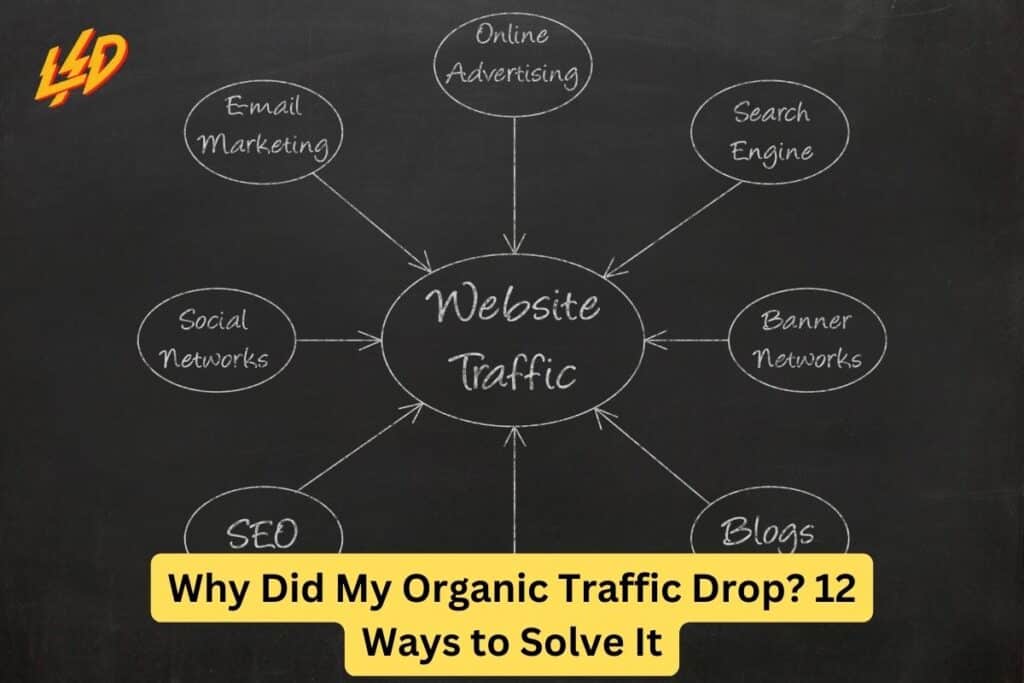In the digital marketing sphere, organic traffic is the lifeblood of website recognition and conversion potential. When there’s a sudden nosedive in traffic stats, it can feel like a digital heart attack. The fear of lost revenue, and the scramble to find out why, is a story shared in varying degrees by website owners, SEO professionals, and digital marketers worldwide. This comprehensive guide will address the common culprits behind a drop in organic traffic and provide a detailed plan to revive and even surpass your former traffic glory.
Understanding the Problem: Peaks and Valleys of Organic Traffic
Before we jump into solutions, it’s important to understand that the world of SEO is always changing. Search engine algorithms constantly evolve and the organic traffic to your website is certain to experience peaks and valleys. Sometimes, these changes are due to external factors that need time to correct, but often, there are actions you can take that will immediately begin to address your traffic drop.
The first step is realizing that a traffic drop can be attributed to one or more of these factors:
- Updates in search engine algorithms
- Technical issues with the website
- Problems with your hosting
- External forces such as the competition or changes in search trends
By methodically ruling out each potential issue, you can regain control and see a substantial recovery in your organic traffic.
The 12 Ways to Solve the Drop in Organic Traffic
1. Check for Google Algorithm Updates
Google, and other search engines, tweak their algorithms hundreds of times each year. While some are minor, others can have a profound impact on search rankings. Following websites and forums that specialize in SEO updates is essential. If you notice a drop in traffic, check to see if there was a major algorithm change around the same time.
It’s recommended to follow sources like Google’s Webmaster Central Blog or search engine news sites. Additionally, webmaster forums and social media channels can provide early insights. Remember, patience is key here. Sometimes you’ll need to wait for secondary updates for your website to recover in the search rankings once the new algorithm has been fully deployed.
2. Review Your On-Page SEO
Ensure that all the classic elements of on-page SEO are in place and correctly optimized. This includes keyword usage in titles, H1 tags, meta descriptions, and image alt attributes. You should also make sure that you have a robust internal linking structure and that your content is not only optimized for keywords, but also provide value to your visitors.
Tools such as SEMrush or Moz can help you audit and analyze the on-page SEO of your website. These tools can also detect keyword cannibalization, a phenomenon where multiple pages on your site target the same keyword, causing them to compete with each other in the search results.
3. Inspect Your Backlink Profile
Backlinks are still a significant ranking factor, and changes in your backlink profile, especially the loss of high-quality backlinks, can drastically alter your website’s search engine results page (SERP) rankings. Use tools like Ahrefs or Majestic to regularly check for new backlinks and to monitor the health of your existing links.
If you’ve experienced a backlink loss, consider reaching out to the linking site to see if there’s a technical issue that caused the backlink to be removed. If that fails, focus on creating more valuable content or executing a targeted link-building campaign to make up for the lost referring domains.
4. Analyze Your Competitors
Sometimes, a drop in organic traffic can be attributed to the rise of a competitor who has experienced a sudden SEO surge. It’s vital to monitor the activity of your closest competitors, to understand what they’re doing well and what you may need to improve on.
Conduct a competitive analysis with tools like SpyFu or Google’s own Keyword Planner. Look at the keywords they’re ranking for, the content they’re creating, and the backlinks they’re earning. Consider this an opportunity to reevaluate your SEO and content strategies to ensure you’re staying ahead in the game.
5. Audit Your Website’s Usability
If users are visiting your site and leaving quickly, or not engaging with it as expected, this can send negative signals to search engines. Poor website usability can include slow page load times, confusing navigation, or a design that doesn’t work well on mobile devices.
Use tools like Google’s PageSpeed Insights to check load times, or heat mapping software like Hotjar to understand where users are getting stuck on your site. Ensure that navigation is intuitive and that users aren’t encountering frustrating dead ends.
6. Evaluate Your Content Quality
Low-quality content can lead to higher bounce rates and less time spent on your site, signaling to search engines that your content might not be worthy of high rankings. Review your content and ensure it’s up to par with user expectations.
This means checking for grammar and spelling errors, accuracy of information, and engagement through comments and social shares. Tools like Surfer SEO or Grammarly can be invaluable for this process, offering insights into keyword density, readability scores, and even sentiment analysis.
7. Check for Technical SEO Issues
A drop in organic traffic could be linked to a technical SEO issue. This could be anything from crawl errors, indexation problems, page speed issues, to improper use of canonical tags. These can all be addressed by conducting a thorough technical SEO audit.
Tools like Screaming Frog or Google Search Console can help pinpoint technical problems. Regularly monitor the overall health of your website through these tools, and fix issues as soon as they arise.
8. Review Your Site’s Mobile Optimization
Mobile optimization has been a critical ranking factor for Google since the introduction of mobile-first indexing. If your site isn’t performing well on mobile devices, you could see a drop in organic traffic as a result.
Test your website across various mobile devices and browsers. Google’s Mobile-Friendly Test is an excellent starting point to determine if there are any immediate issues with how your site appears on mobile. Always make sure critical information is easily accessible on smaller screens, and that forms and buttons are easily clickable.
9. Verify Security Issues
Security is not only important for user experience but also for SEO. Websites with security issues, such as malware or insecure socket layers (SSL), can get penalized in the search rankings. Regularly check your site for these issues, and then enhance security with regular updates and backups.
Tools like Sucuri Security or Wordfence can help scan for malware or vulnerabilities. Make sure your SSL certificate is up to date and consider implementing security measures like two-factor authentication for user logins.
10. Confirm No Penalties from Google
Google penalties can have a significant impact on organic traffic. These penalties could be algorithmic or manual, often for violations of Google’s Webmaster Guidelines, such as thin content, unnatural links, or hidden text.
Check Google Search Console for alerts or messages that indicate you’ve been penalized. If you find any, assess your site to see what might have violated the guidelines and take corrective action. The Disavow Tool can be useful for tackling problematic backlinks, should that be the cause of your penalty.
11. Examine Changes in User Behavior
User behavior can tell a lot about how your website performs. If traffic drops coincide with less time spent on site, fewer pages per session, and higher bounce rates, it’s an indication that users aren’t finding what they need.
Analyze the ‘Behavior Flow’ section in Google Analytics to see precisely where visitors are dropping off. You might need to adjust your content strategy to meet your audience’s needs or rethink your site’s navigation to guide users to the right pages.
View More: 60+ Blog Niche Ideas ( How To Pick Blog Niche In 2024 )
12. Test Page Load Speed
Page speed is crucial for both user experience and SEO. Google’s algorithm considers how fast your pages load, and slow load times can lead to a drop in rankings and traffic. Utilize tools like GTmetrix or Pingdom to identify which pages are slow to load and address the issues.
Optimize images, enable browser caching, and consider using a content delivery network to speed up page load times. Aim for loading speeds of under 3 seconds, as this is the current benchmark for user expectations and search engine rankings.
Conclusion: The Road to Recovery
A drop in organic traffic is a considerable concern but not an insurmountable issue. By following this guide, you can systematically address the potential root causes and start the process of recovering your lost traffic. Remember, the field of SEO is as much about patience as it is about practice. Some changes will result in a quick recovery, while others may require more time to yield positive results.
Read More: 10 Steps to Rebrand Your Business (without Hurting Your SEO)
Frequently Asked Questions (FAQs)
Q: How often should I audit my website’s SEO performance?
A: It’s recommended to conduct a comprehensive SEO audit at least twice a year. However, for more dynamic websites or those heavily reliant on organic traffic, a quarterly review may be more appropriate to quickly identify and address emerging issues.
Q: Can page speed really affect my website’s SEO?
A: Yes, page speed is a critical factor for SEO as it affects user experience. Google has explicitly indicated that it is a ranking signal. Fast-loading pages improve overall site engagement, reduce bounce rates, and can lead to better rankings.
Q: Are backlinks still important in 2023?
A: Absolutely. While the quality of backlinks has become more important than quantity, they remain a significant ranking factor. Focus on building a natural backlink profile with high-quality, relevant links to your site.
Q: What can cause a manual penalty from Google?
A: Manual penalties can result from any action that violates Google’s Webmaster Guidelines. This includes using manipulative tactics like keyword stuffing, buying links, or cloaking. Transparency and adhering to best practices is the best way to avoid penalties.
Q: How can I make sure my website is mobile-friendly?
A: Use Google’s Mobile-Friendly Test to analyze your website. Additionally, ensure your design is responsive, which means it adapts to various screen sizes. Simplify menus, keep buttons fingertip-friendly, and avoid using Flash.
Q: How do I improve my website’s usability?
A: Focus on a clean, intuitive design with straightforward navigation. Conduct user testing to identify pain points. Make sure your website is accessible, implements a logical hierarchical structure, and includes clear calls-to-action.
Q: What is a content delivery network (CDN), and do I need one?
A: A CDN is a network of servers strategically placed to deliver content to users more quickly and efficiently. It’s especially useful for websites with a global audience to ensure faster loading times for users regardless of their location. Consider using a CDN if your website has high traffic and serves users worldwide.
















